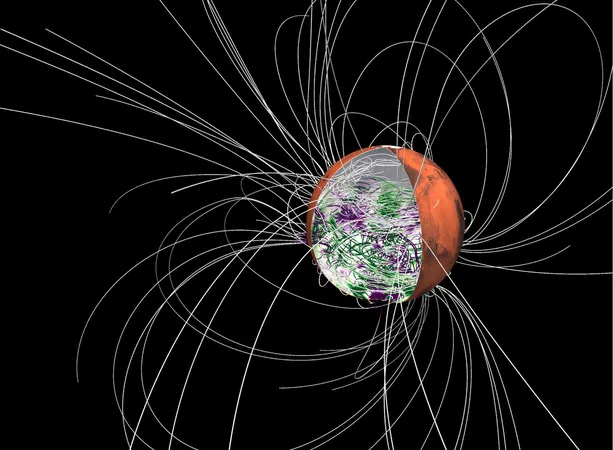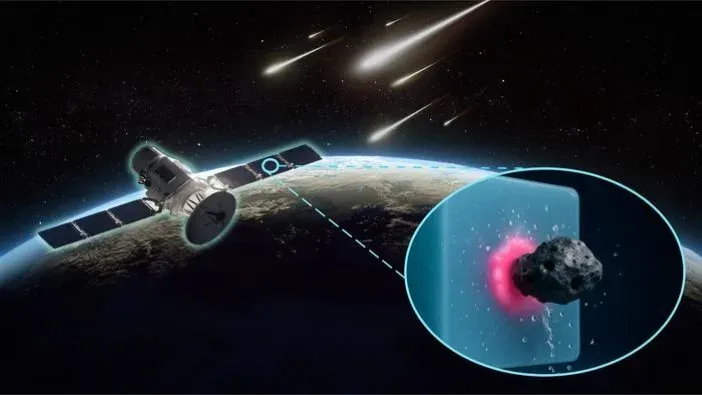
Unlocking Mars' Magnetic Mysteries: The Case for a Molten Core
2025-04-15
Author: Arjun
Mars' Magnetism: A Puzzle of the Cosmos
Mars, our red neighbor, once boasted a robust magnetic field akin to Earth's, safeguarding its thick atmosphere from the relentless solar wind. However, what remains today is merely a ghostly imprint of this field, puzzling scientists for years—especially its odd tendency to appear more pronounced in the planet's southern hemisphere.
New Insights from a Groundbreaking Study
A compelling new study led by planetary scientist Sabine Stanley from Johns Hopkins University sheds light on this lopsided magnetic phenomenon. The research suggests that Mars' magnetic field might have originally only enveloped its southern half, providing a plausible explanation for the uneven imprint we observe today.
Chi Yan, the study's lead author from the University of Texas Institute for Geophysics, emphasizes that this one-sided magnetic field sets Mars apart from Earth, whose magnetic field wraps around the entire planet. Yan proposes that this atypical configuration could stem from Mars' inner core being molten.
The Case for a Molten Core
Utilizing advanced computer simulations, the researchers explored the idea that the absence of a solid inner core makes it much simpler to generate a hemispheric magnetic field. Yan notes that this could have crucial implications for understanding Mars' ancient dynamo—its natural mechanism for sustaining a magnetic field—and how long it might have retained its atmosphere.
Previously, many models painted a picture of Mars having a solid inner core, resembling Earth's. However, findings from NASA's InSight lander indicated that Mars' core contains lighter elements than anticipated, suggesting a different melting temperature that could render it molten.
Exciting Discoveries Ahead
Stanley confirms that if Mars' core is indeed molten today, it likely was in its early history, around 4 billion years ago, when its magnetic field was most active. To test this theory, the team ran simulations of early Mars with a liquid core on supercomputers, adjusting the temperature of the northern mantle to create a gradient.
This thermal disparity ultimately led to heat escaping from the core exclusively at the southern end, generating a vigorous dynamo effect capable of producing a strong magnetic field localized in the southern hemisphere.
Challenging Old Assumptions
Doug Hemingway, a planetary researcher at the University of Texas—though not part of the study—notes that this new theory offers a fascinating alternative to the conventional wisdom that asteroid impacts obliterated evidence of a formerly planet-wide magnetic field in Martian northern hemisphere rocks.
Mars continues to be a captivating subject for investigation, sharing certain characteristics with Earth while presenting stark contrasts. Understanding the reasons behind its dramatic hemispheric differences in topography and magnetic field enhances our grasp of this intriguing planet.
The Future of Martian Exploration
Funded by NASA's InSight program, this study not only deepens our understanding of Mars but also lays a foundation for future investigations, possibly paving the way for human exploration of the red planet.





 Brasil (PT)
Brasil (PT)
 Canada (EN)
Canada (EN)
 Chile (ES)
Chile (ES)
 Česko (CS)
Česko (CS)
 대한민국 (KO)
대한민국 (KO)
 España (ES)
España (ES)
 France (FR)
France (FR)
 Hong Kong (EN)
Hong Kong (EN)
 Italia (IT)
Italia (IT)
 日本 (JA)
日本 (JA)
 Magyarország (HU)
Magyarország (HU)
 Norge (NO)
Norge (NO)
 Polska (PL)
Polska (PL)
 Schweiz (DE)
Schweiz (DE)
 Singapore (EN)
Singapore (EN)
 Sverige (SV)
Sverige (SV)
 Suomi (FI)
Suomi (FI)
 Türkiye (TR)
Türkiye (TR)
 الإمارات العربية المتحدة (AR)
الإمارات العربية المتحدة (AR)